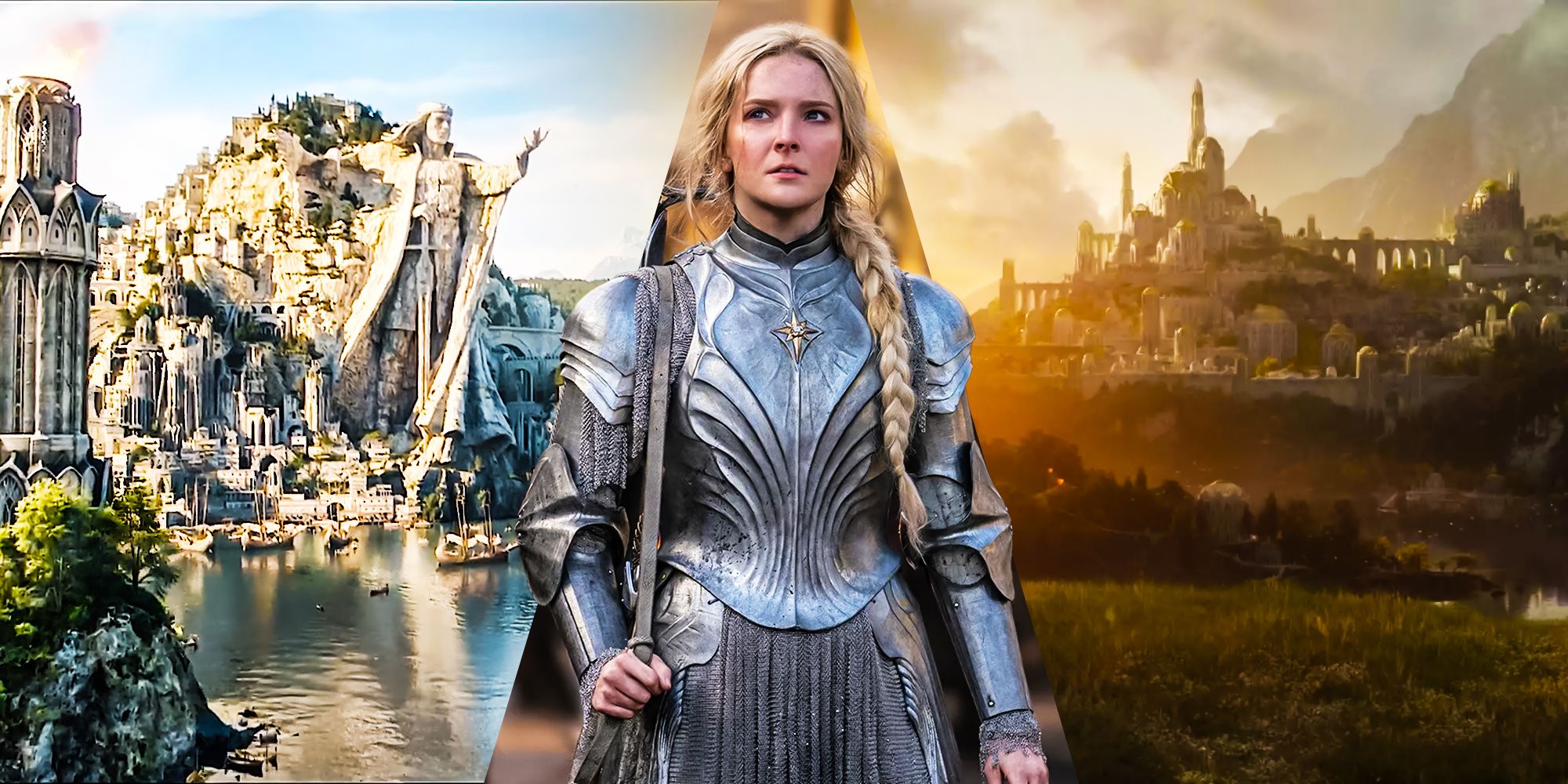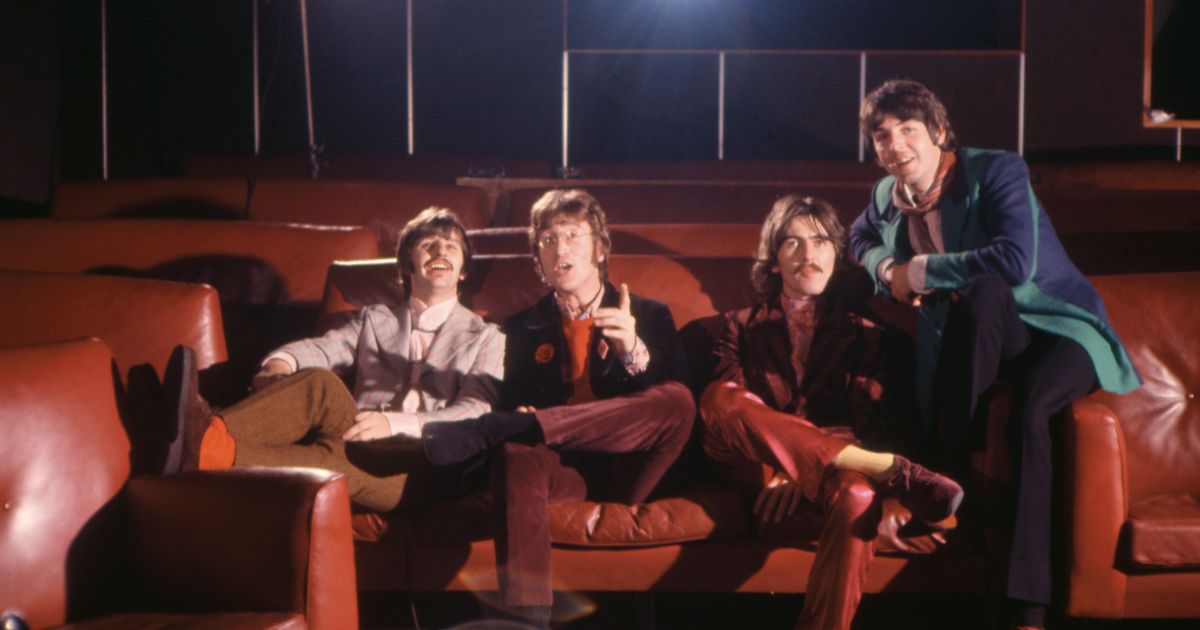
Rings Of Power's LOTR Changes Are A Good Thing, Despite Fan Fears
Following the release of a trailer and character posters, some are starting to become concerned that Amazon’s Lord of the Rings: The Rings of Power will deviate too much from Tolkien’s work, but these changes are good for the series. Kept under strict secrecy, the upcoming Amazon series wrapped filming in August 2021, with the first episode set to air on September 2, 2022. Rings of Power will fill TV’s fantasy gap left after Game of Thrones concluded and it holds a similarly impressive budget with the studio reportedly spending $1 billion to ensure the show’s success.
The show will be set in Middle Earth – a concept that was previously believed to be unfilmable. This was disproven in the early 2000s with Peter Jackson’s Lord of the Rings trilogy introducing audiences to the author’s iconic locations including the Shire, Rivendell, and Mordor. Many of these were revisited over 10 years later when Jackson returned to Middle Earth with The Hobbit trilogy. Though not as critically successful as its predecessor, Jackson’s second trilogy of films demonstrated a continued interest in the stories of Middle Earth, something that will be reinforced with The Rings of Power.
Details of the upcoming Amazon series have been kept secret, but the trailer, which notably looks like Jackson’s original LotR movies, teased certain narrative elements which have caused apprehension for some Tolkien readers due to how the source material appears to have changed. These changes, however, are a good thing for the series and should not be considered a hindrance to the upcoming show. By considering how adaptations have deviated from Tolkien’s work in the past as well as the constricts of differing mediums, The Rings of Power is right to not attempt to replicate the source material to the letter.
The Rings Of Power Needs To Avoid Over-Reliance On LOTR’s Books

The biggest concern that many seem to have with the upcoming series is its manipulation of Tolkien’s timeline and the fabrication of new characters. Despite speculation that the Amazon series would be an adaptation of Tolkien’s The Silmarillion, the studio confirmed that it instead has the rights to the appendices from The Lord of the Rings series and The Hobbit. These sections cover the basics of what happened in the First and Second Ages of Middle Earth in bullet point form, leaving the show with the basic events of the period and room to fill in the details themselves.
Tolkien’s analysis of the Second Age – the period in which the Amazon series will be set – covers thousands of years, yet the show will collapse the events into a much smaller time frame. To attempt to match Tolkien’s timeline would mean that each series would have to cover hundreds of years, with main characters dying off at a rapid rate. This would risk alienating audiences without prior knowledge of the books and place too much weight on the series’ distance from the Lord of the Rings movies. Though only using the appendices, the show nonetheless has a large amount of information to cover and condensing the process into a smaller time period with new characters will work to prioritize clarity and storytelling over direct fidelity.
Changing Tolkien’s Text Has Worked For LOTR Before

The Rings of Power will not be the first adaptation to make changes to Tolkien’s work. A similarly condensed timeline was employed by Peter Jackson and writers Fran Walsh and Philippa Boyens for Lord of the Rings: Fellowship of the Ring, in which Frodo leaves the Shire within a year of being given the Ring by Bilbo – contrary to the 17 years that the Hobbit remains in Bag End in the books. The changes made served to prioritize the film’s pacing. Instead of waiting with Frodo while he decides what to do, the timeline change instead ensured that the movie remained interesting and didn’t lose momentum.
The Rings of Power’s new characters are another concern for some, believing it to be an unnecessary extension of Tolkien’s work. Charlie Vickers is playing an original character named Halbrand in the upcoming series and rumors suggest that Emma Horvath will be playing Isildur’s sister, Carine, who is not mentioned in the books despite her brother’s prominent role in the movement of the One Ring. Though character changes such as these have not been enacted on this scale before, Jackson’s Lord of the Rings trilogy made similarly drastic decisions in terms of character arcs and screen time.
On the one hand, Jackson’s trilogy emphasizes the role of Arwen to a far greater extent than the character appears in the books, and Saruman’s gruesome death atop Orthanc is entirely fabricated for the screen – removing the character’s original ending of overtaking The Shire. Conversely, the films also removed prominent characters from the books such as Tom Bombadil and Glorfindel. This is to say that The Rings of Power’s introduction of new characters will not be to the detriment of Tolkien’s work, but rather a compliment to the episodic medium.
A Perfect Adaptation Of The LOTR’s Books Is Impossible

The criticisms of Amazon’s potential changes fail to account for the fundamental issue with adaptation – namely, that the effect of words on a page is incomparable to the use of moving images. Jackson’s two trilogies encapsulated this sentiment perfectly, making changes to The Lord of the Rings books in order to benefit the filmmaking medium and condensing the timeline to maintain a cinematic pace – an ostensibly different process to the experience of reading a book where the reader can choose at what speed they experience the narrative. The films notably contain far fewer songs than are sung in the books since these sequences are difficult to make cinematic – notable exceptions apply such as Pippin’s song to Denethor, yet the sequence remains cinematic via close-ups of Denethor’s grotesque eating habits and crosscutting to Faramir’s sacrificial attempt to retake Osgiliath.
The Rings of Power cannot afford to lean too heavily on Tolkien’s work for its success. In order to work on its own merits, it is essential that the show makes edits to the original appendices. By prioritizing storytelling, character development and action over historical fidelity, the show can retain Tolkien’s origins of the Rings while ensuring that the series is not bogged down in unnecessary information. Making these changes to the text, Lord of the Rings: The Rings of Power is not dishonoring Tolkien’s work, but instead attempting to present the Second Age in a way that is both exciting and accessible.








































![iFi's GO Bar Kensei Dongle DAC Supports K2HD Technology With Some Samurai Swagger [Updated] iFi's GO Bar Kensei Dongle DAC Supports K2HD Technology With Some Samurai Swagger [Updated]](https://i0.wp.com/cdn.ecoustics.com/db0/wblob/17BA35E873D594/33FF/45A11/QTXOLJR4xDKSNMMk2WlTgjaIlvSgcYpeU1xJzUwIoYs/ifi-go-bar-kensei.jpg?w=768&ssl=1)























